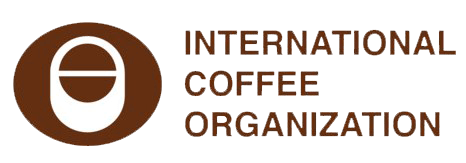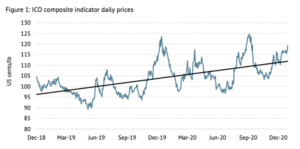Climate conditions and growing demand for coffee determine the rise in prices of Arabica coffee. These factors will also determine the market trend for 2021
ArtOn Café is proud to publish a monthly abstract of the ICO reports. On our website we have added the graphs of the London and the New York stock exchanges. The former concerns Robusta coffee, while the latter refers to Arabica coffee. We have also added an interesting banner that presents the EUR to USD exchange rate. Please visit our website to access all these details.

The following is an abstract of the ICO coffee market report of December 2020.
The ICO composite indicator in December increased by 4.6% to 114.74 US cents/lb as prices for Arabica group indicators increased. The largest increase occurred for Brazilian Naturals, which grew by 8% to 114.96 US cents/lb, which is the highest monthly average since December 2019 when they reached 126.36 US cents/lb. Colombian Milds rose by 5.7% to 170.44 US cents/lb and Other Milds by 4.7% to 157.81 US cents/lb, which are both higher than their average in December 2019. However, prices for Robusta fell by 0.5% to 72.04 US cents/lb. In the first two months of coffee year 2020/21, total exports were 6.5% higher at 20.2 million bags compared to the same period last year as shipments for all groups declined except Brazilian Naturals, which rose by 23.1% to 8.31 million bags. Likely due to the
impact of the covid-19 pandemic, imports by ICO importing Members and the United States decreased by 4.5% to 129.98 million bags in coffee year 2019/20. While both green and roasted imports declined in coffee year 2019/20, imports of soluble coffee increased by 1% to 14.4 million bags. In coffee year 2019/20, re-exports by ICO importing Members and the United States rose by 0.4% to 46.93 million bags.

Source: ICO 2020 Coffee Report
ICO Mission
The International Coffee Organization (ICO) is the main intergovernmental organization for coffee, bringing together exporting and importing Governments to tackle the challenges facing the world coffee sector through international cooperation. Its Member Governments represent 98% of world coffee production and 67% of world consumption.






